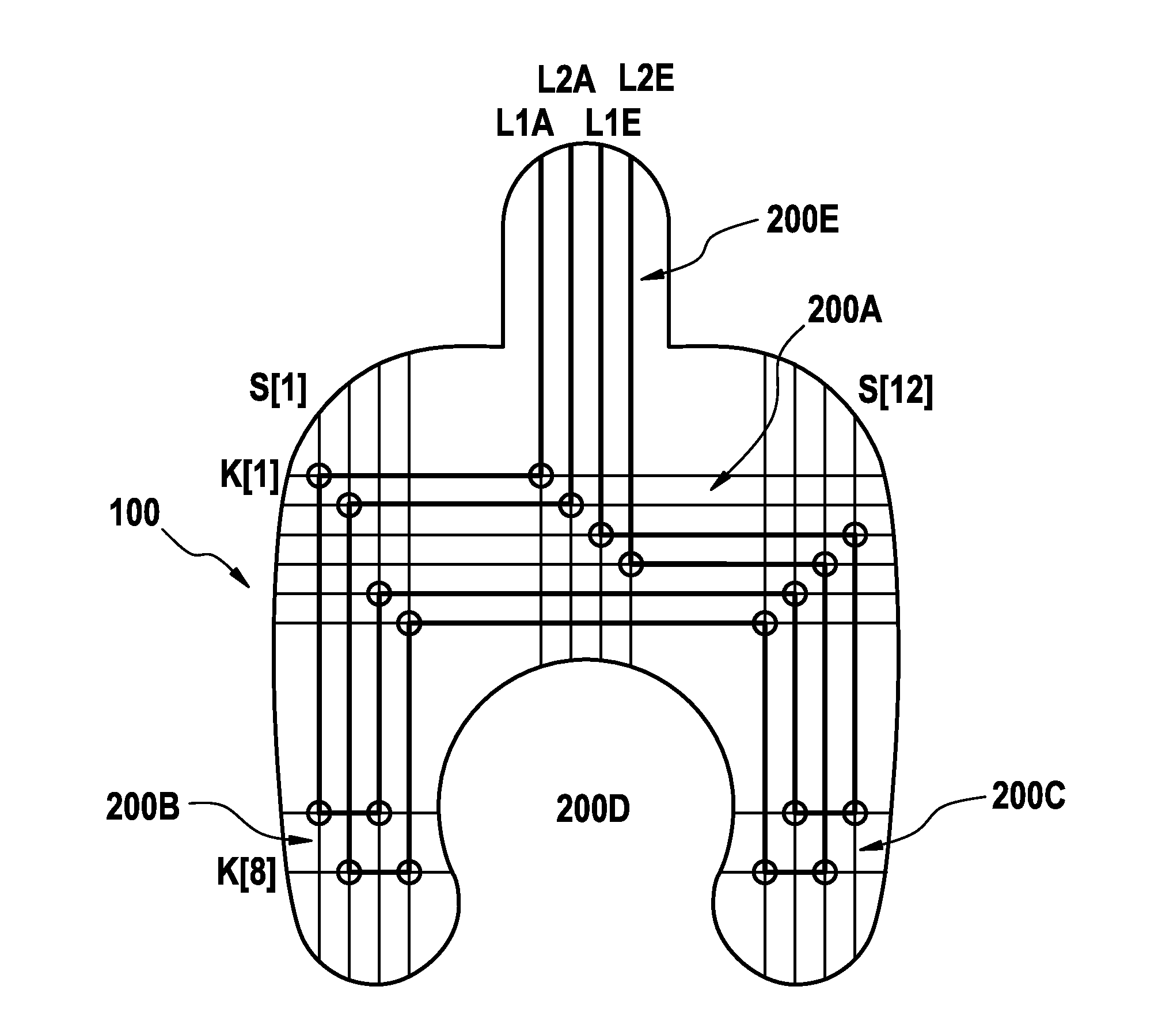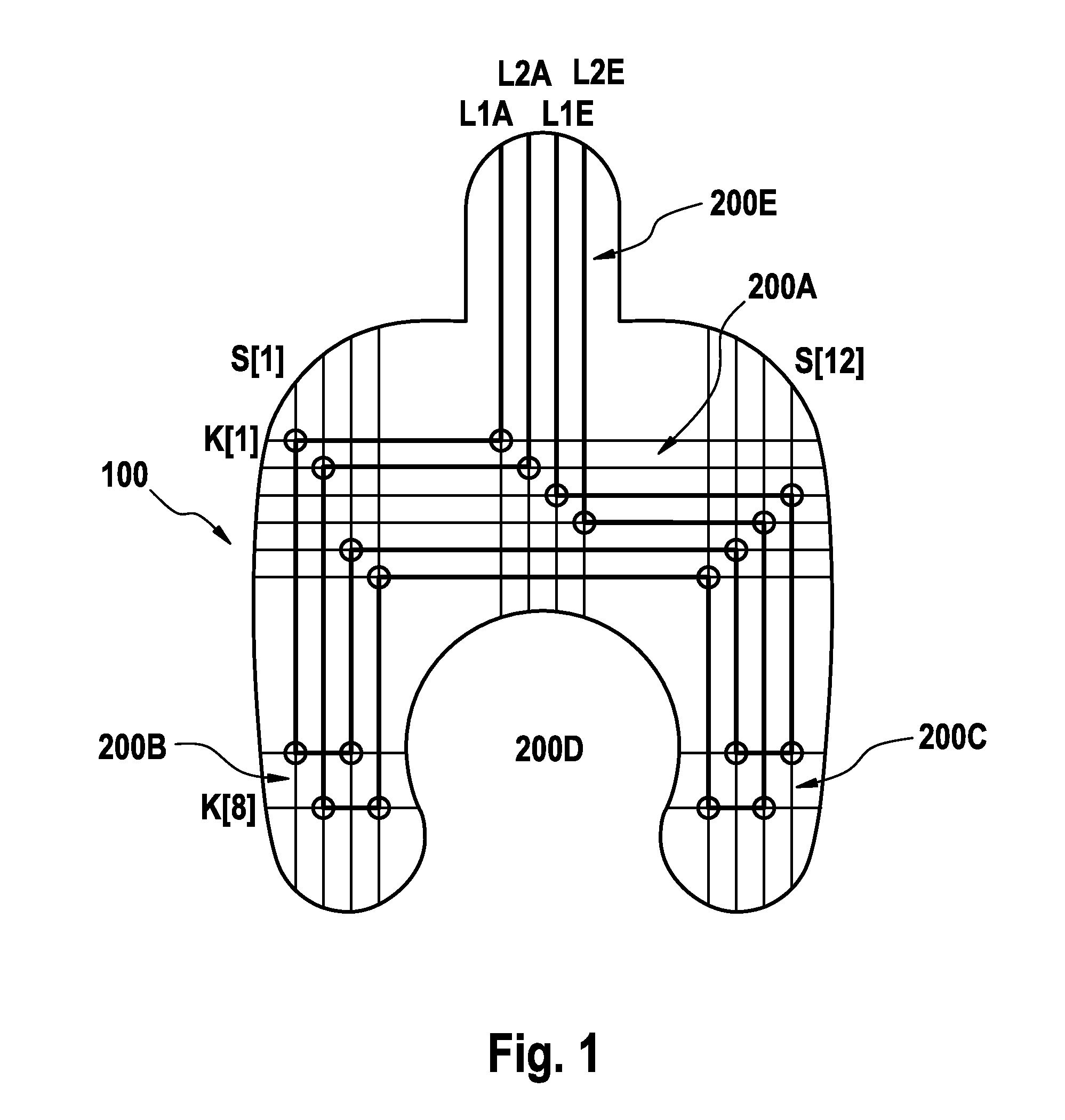Method and device for testing sensorsto be applied on a patient's skin forthe detection of fluid or moisture
a technology for testing sensors and skin, applied in the field of methods and devices for testing sensors to be applied on the skin of patients for the detection of fluid or moisture, can solve the problems of electrically conductive sections repeatedly subjected to tensile, compressive or bending stresses, mechanical stress, and the risk of strip conductor rupture, so as to achieve maximum freedom of movement of the arm
- Summary
- Abstract
- Description
- Claims
- Application Information
AI Technical Summary
Benefits of technology
Problems solved by technology
Method used
Image
Examples
Embodiment Construction
[0030]FIG. 1 shows in plan view an exemplary embodiment of a woven moisture sensor 100 for monitoring a vascular access. The moisture sensor, which can be treated as a plaster, is stuck onto the patient's skin. The moisture sensor is stuck onto the patient's forearm to monitor an arterial or venous vascular access in extracorporeal blood treatment.
[0031]Moisture sensor 100 is constituted as a pad of a textile planar structure to be placed onto the patient's skin. The textile planar structure is a fabric comprising electrically conductive and electrically non-conductive warp and weft threads. The electrically conductive warp and weft threads are disposed at the points of intersection such that an electrically conductive structure is formed.
[0032]The moisture sensor comprises a central zone 200A with two legs 200B, 200C, which laterally enclose a semicircular cutout 200D. A tab 200E lying opposite the two legs is formed on the central zone. The electrically conductive warp and weft th...
PUM
| Property | Measurement | Unit |
|---|---|---|
| Angle | aaaaa | aaaaa |
| Angle | aaaaa | aaaaa |
| Angle | aaaaa | aaaaa |
Abstract
Description
Claims
Application Information
 Login to View More
Login to View More - R&D
- Intellectual Property
- Life Sciences
- Materials
- Tech Scout
- Unparalleled Data Quality
- Higher Quality Content
- 60% Fewer Hallucinations
Browse by: Latest US Patents, China's latest patents, Technical Efficacy Thesaurus, Application Domain, Technology Topic, Popular Technical Reports.
© 2025 PatSnap. All rights reserved.Legal|Privacy policy|Modern Slavery Act Transparency Statement|Sitemap|About US| Contact US: help@patsnap.com



